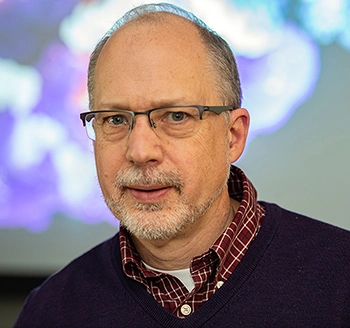Looking for the latest trends in biotech? Phil Gotwals has answers. In his former role focused on searching for and evaluating external science and technology at the Novartis Institutes for BioMedical Research (NIBR), he laughingly called himself a “personal shopper” for scientists looking for innovative ways to discover new medicines.
Now Head of Business Development and Licensing (BD&L) at NIBR, Gotwals is thinking more strategically. His eyes are still on the trends, but he’s also delving deeply into the science already in play at NIBR to guide thinking about which of those new trends to pursue and how – in an existing internal program or through a business alliance.
“We want to have a long enough line of sight to the opportunities that are coming in to NIBR so that we can start to prioritize within and across our existing discovery and early development programs,” says Gotwals.

An eye for the avant-garde has been in Gotwals’ makeup from the start. He pursued a Ph.D. in fruit fly genetics before the genome of any living organism had been sequenced. He did so because genetic experiments can be so definitive. Remove a gene from an organism and learn without question its role in biology. These studies form the foundation for thinking about human disease and medical interventions today.
Here, Gotwals talks about science, the search for innovation, and his strategy for BD&L.
Were you always interested in science?
Going back to my undergraduate days, I was interested in pursuing two things: music and science. To make a long story short, science won. I still sing and play the horn some. I try to do a little music. It’s in my soul.
By opening ourselves up to the world...we’re going to have a much better chance of fulfilling our promise to get the best medicines to patients efficiently
Phil Gotwals, Head BD&L for research at Novartis
After earning a Ph.D. in genetics, what inspired you to choose a career in industry?
As a postdoctoral fellow in academia, I was working to understand a very specific type of molecule called an integrin that can play a role in multiple diseases. By working with our pharmaceutical company collaborators, I got an introduction to the kind of science that was going on in industry.
I learned that scientists working in industry actually generate potential therapeutics to these molecules and test to see if they help people with disease. Once I understood that, I never looked back.
What brought you to Novartis?

I heard about NIBR in 2003 or so. I was completely sold on the mission. I liked the idea of getting to know as quickly as possible whether an experimental medicine is going to benefit patients. I was determined to join the organization when the right opportunity arose.
When I joined NIBR in 2009, there was no immuno-oncology group, but there was a strong desire to enter the space in a competitive way. I helped build the foundations of our immuno-oncology research team, which now not only has delivered approved therapies but also has a pipeline of projects.



